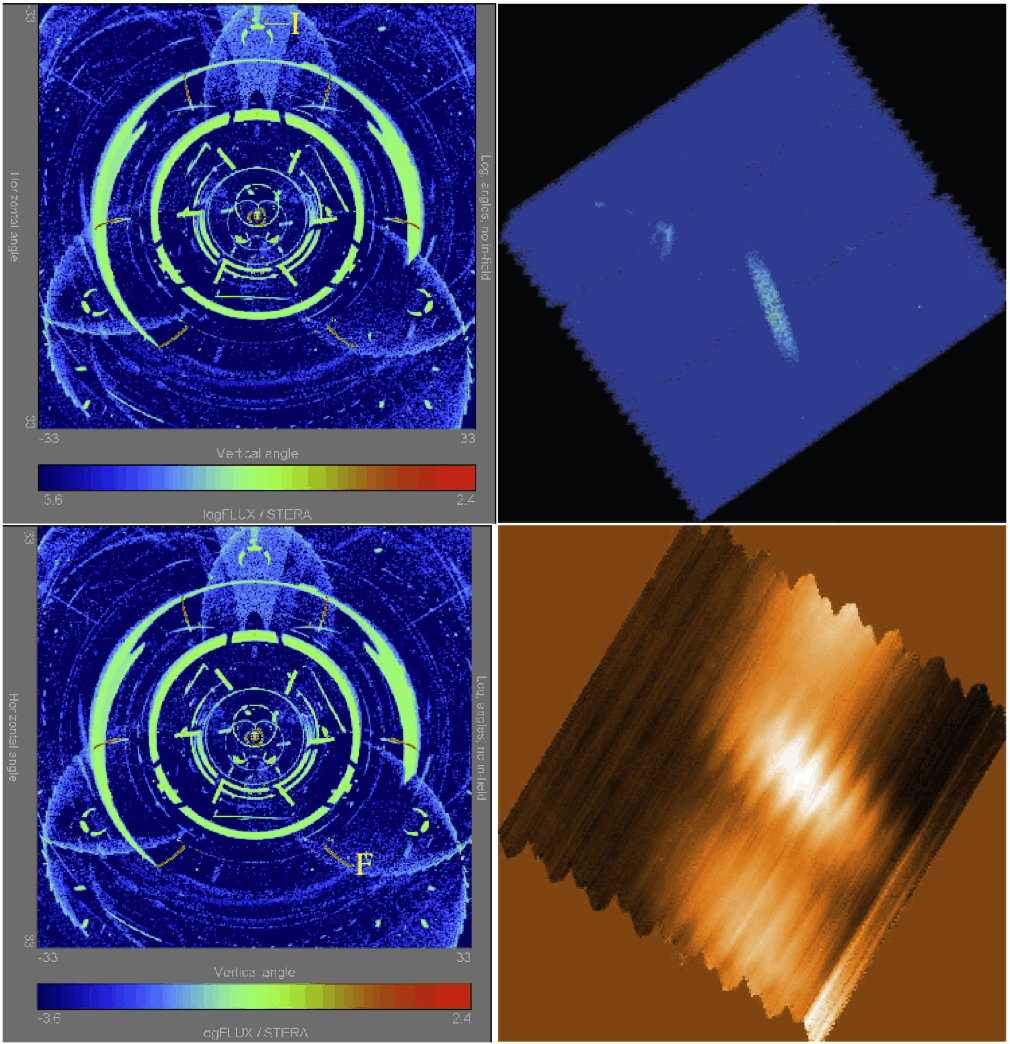The Herschel design was carried out including the instrument optical layout. This approach allowed the level of straylight that originates from the various sources at detector level to be provided directly. Therefore, the straylight requirements were given directly as the straylight reaching the detector. The following apply over the full operational wavelength range:
Scattered light from sources outside the telescope FoV: Taking into account the worst possible combination of the positions of the Moon and the Earth w.r.t. the line of sight (LoS) of the telescope, the extreme values are:
The straylight will be < 1% of background radiation induced by the self-emission of the telescope.Sun-S/C-Earth angle of 37°
Sun-S/C-Moon angle of 47°
Sun-S/C-LoS angle of 60°.8 to 119°.2 (in the S/C XZ plane)
Maximum roll angle of ±1°
Sources inside the FoV: over the entire FoV at angular distances ≥ 3 arcmin from the peak of the point-spread-function (PSF), the straylight shall be < 1 × 10-4 of PSF peak irradiance (in addition to level given by diffraction).
Self-emission: The straylight level, received at the defined detector element location of the PLM/FPU straylight model by self emission (with "cold" stops in front of PACS and SPIRE instrument detectors), excluding the self emission of the telescope reflectors alone (but including any other contributor, notably the M2 hexapod), shall be < 10% of the background induced by self-emission of the telescope reflectors.

Figure 4.13. Comparison of straylight optical models produced by M. Ferlet (priv. comm.) and observational results. In the top row, a Herschel observation has been planned with Jupiter in position 'I', while in the bottom row the Moon has been placed in position 'F'. In both cases, there is a very good agreement between the model prediction and the straylight results.
According to current straylight analysis for the orbit configuration of Herschel (see [RD3]), for sources outside the FoV, the straylight radiation is within specification, except for small locations on the sky, where radiation reflected from rectangular hexapod structures can enter the instruments directly. These small locations exist primarily for the Moon. Only two minor paths were found which could be applicable also to the Earth. For the worst-case locations of the Moon, the specification is exceeded by a factor 16.4.
For sources inside the FoV, the requirement is met by a wide margin.
Finally, for thermal self-emission, the requirement is not met. Actual values (expressed as a fraction of the background induced by self-emission of the telescope reflectors) are:
30% for PACS and 19% for SPIRE (pessimistic case)
12% for PACS and 8% for SPIRE (optimistic case)
The HSC created a dedicated working group to study the straylight efffects on the Herschel operations. New models based on the 'as built' optical system were prepared and observations were made to verify the models (see Figure 4.13 for examples of model and observational reality). Improvements in stray light checking in mission planning were made during operations and all cases of possible conflicts were verified manually by the Spacecraft Environment Scientist; where there was found to be a significant danger of degradation of the quality of an observation due to straylight it was re-scheduled for a later epoch. In a few cases late in the mission, when there was no possibility of re-scheduling an observation potentially affected by straylight, it was accepted that such observations had to be scheduled on a "now or never" basis, with a date for execution being choosen that minimised the effects of straylight, provided that the observations was of a point source and that its scientific quality would not be significantly degraded.